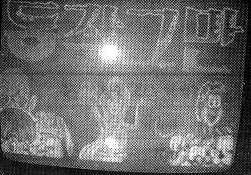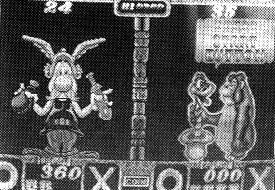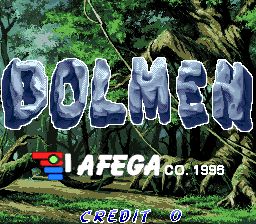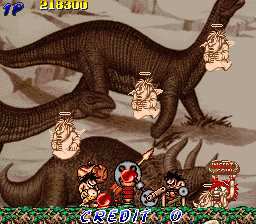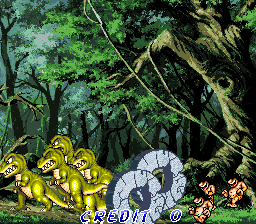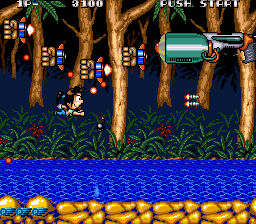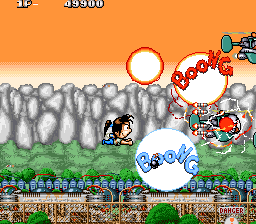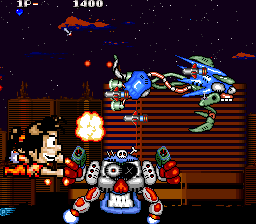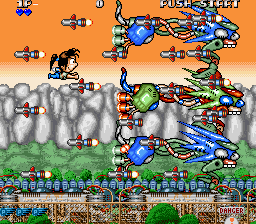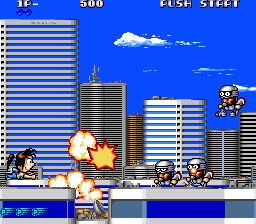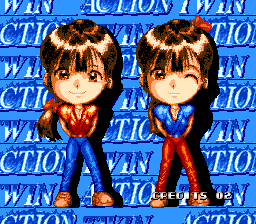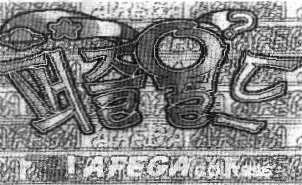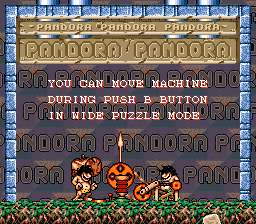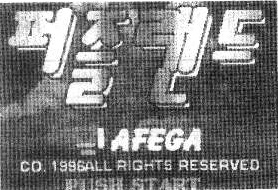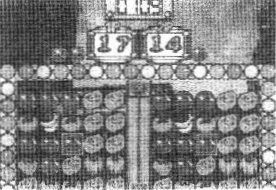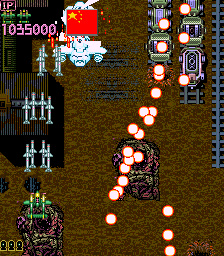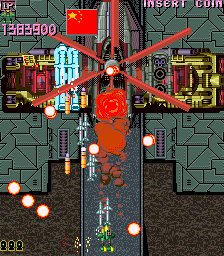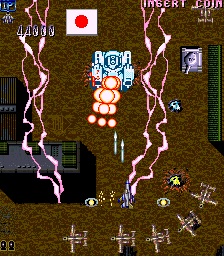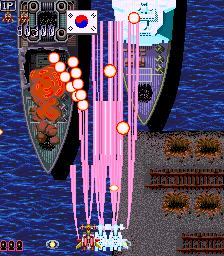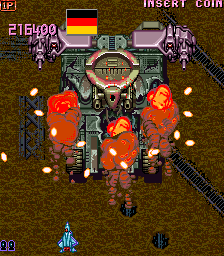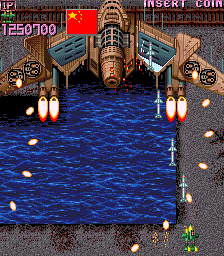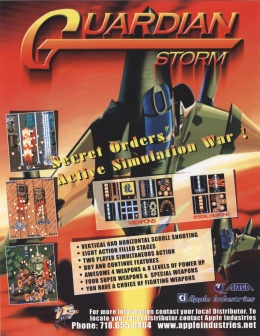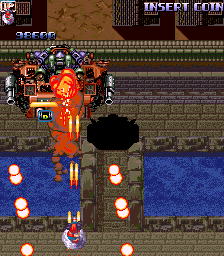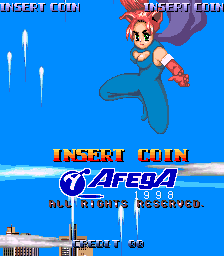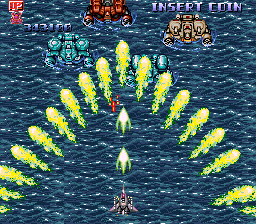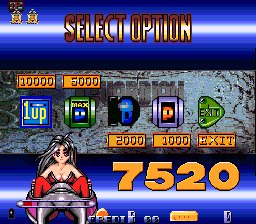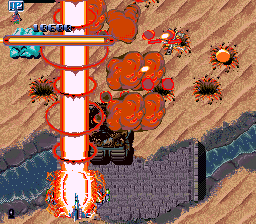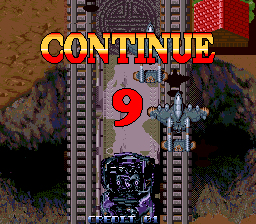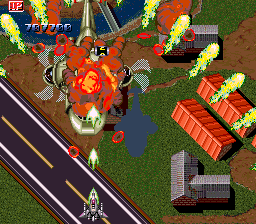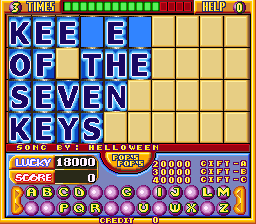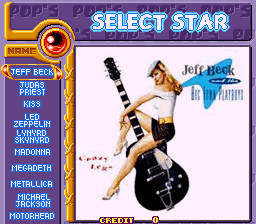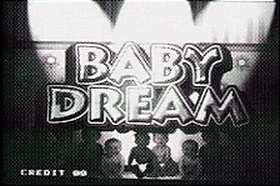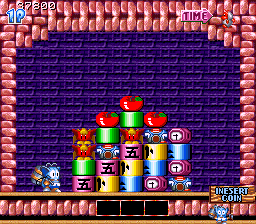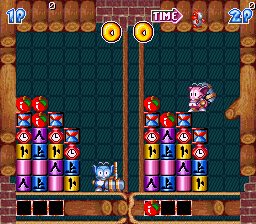A History of Korean Gaming
아페가 Afega

|
Founded: |
June 1994 |
|
Status: |
defunct (around 2001) |
|
Key People: |
류해남 Ryou Hainam: |
|
Website: |
none |
The name Afega is a play on the Korean sentence ap-e ga (going forward), although later it also artificially appears as a contrived acronym for Art-Fiction Electronic Game.
The company was originally founded and led by Ryu Hainam, but eventually he would give up for his brother to take over. Ryu Haisung already had experience from working at Dooyong, and parallel to that company's development shifted the focus from puzzle to shooting games1. Apparently he also took some tech from his former employer with him, because many Afega boards still betray being derived from NMK hardware2.
In the end, however, the company went back to puzzle games, and even produced some physical arcade games before vanishing in the Korean arcade crisis around the turn of the century.
Games
동작 그만 (Dongjak Geuman) - Arcade (1995)
Afega started with this simple "Simon Says" type of game, where items have to be raised or lowered according to voiced commands. Although the machine has been published by a company called Giga Electronics, the game has been officially identified as an Afega development3.
Quick Info:
|
Developer: |
Afega |
|
Publisher: |
Giga Electronics |
|
Genre: |
Action: Single Screen |
Twin Action / Air Fox (에어폭스) - Arcade (1995)
Twin Action (Arcade)
Afega's first shooter wasn't an original game, but ripped straight from NMK's US AAF Mustang, only with almost all graphics changed for a much more goofy design4, while most of the music was stolen from Sonic Blast Man on the SNES5.
The steal comes rather surprising, as Ryou Haisung was already responsible for some of the original games at SunA before. Twin Action may have been used as a cheap means to give the company some financial footing, or development could have been started before Ryou Haisung joined.
퍼즐월드 (Puzzle World) / Pandora / Hot Bubble - Arcade (1995)
In the above-cited issue of Amuse World, Ryou Hainam mentioned another puzzle game called Pandora, which supposedly was rather successful in Europe. This seems to have been a revision of Puzzle World, which itself is a sequel to Dolmen, with the same character sprites from Prehistorik 2 or Puzzle Land. So far there's no trace of the 1996 Pandora itself, but there a later adult version called Hot Bubble, which still contains many instances of the Pandora logo.
Quick Info:
|
Developer: |
Afega |
|
Publisher: |
Afega |
|
Genre: |
Puzzle |
|
Theme: |
Prehistoric |
퍼즐랜드 (Puzzle Land) - Arcade (1995)
Another unknown puzzle game. The Korean GRB's description makes it seem similar to Panel de Pon by Intelligent Systems (rebranded as Tetris Attack in the West), but since the games were released very closely (Panel de Pon came out October 27th, 1995, and Puzzle Land was already applied for rating only two months later), a direct influence seems unlikely.
Quick Info:
|
Developer: |
Afega |
|
Publisher: |
Afega |
|
Genre: |
Puzzle |
Red Hawk (레드호크) / Stagger I - Arcade (November 1997)
European Flyer
Red Hawk was Afega's big breakthrough. Even though its success was mostly expressed in the spreading of bootlegs in China, Afega still claimed to have exported more than 10,000 machines. In Korea, the game was originally published before the summer vacation of 1997, but called back for some reason, and not sold again until November the same year. At first sales were slow because of the low machine price of 250,000 Won (which lead arcade owners assume low quality), but after word-of-mouth had spread, the game became a hit in its home country, too6.
While it didn't bring anything new on the shmup table, Red Hawk's biggest strength was its bombastic arsenal, throwing together all kinds of weapon systems that are seen in the genre. Besides the highly upgradeable standard weapon, planes can charge for a devastating, screen filling special attack. Those don't replace smart bombs, though, as those are available, too. Finally, there's a number of sattelites to further boost fire power. All weapons are unique for each of the four different pilots, too.
The game originally used an upright monitor, but for some reason some of the European releases swapped the horizontal and vertical resolution around for ordinary display orientation. This makes the game noticably harder, as enemies are seen later. In Japan, the game was distributed as Stagger I (with the upright screen resolution).
戰神 (전신, Jeonsin) / Guardian Storm - Arcade (1998)
Arcade Flyer
Guardian Storm runs on the same shooting engine as Red Hawk, so it can be considered as a kind of sequel. The design, however, is much more cartoony, even though the advertisement for the Western release doesn't show it at all. One of the characters is Sun Wukong on a cloud, and there's some crazy enemies like the Dol Hareubang statues of Jeju Island.
Powerup pickups during the stages have become much rarer now, more enemies now drop money instead, which can be used to buy upgrades in a store after each stage, but usually spending power is very limited, which is the major reason for this game being much harder than Red Hawk.
Guardian Storm was also quite successful internationally, once again some versions have been converted from upright to standard resolution in the localization progress. In Korea the game is titled Jeon Sin, using Chinese charaters, which in result led to the game being nonsensically listed as "Sen Jin" in MAME, which is now the dominantly spreaded name around the web, although a possible Japanese release is not known at all.
Pop's Pop's (팝스팝스) - Arcade (1999)
Alas, Afega's shooting dreams came to an end after Guardian Storm. Their next title was a vague adaption of The Wheel of Fortune. The game plays out pretty much like the show, only all solutions are song titles. There are only about 50 different in the game, and the artist is always displayed as an aid. Without that, the game would be practically impossible, as the rules are very harsh. A turn is over as soon as one guesses a wrong letter, and every round has no more than three turns. There's also a "Mania" mode, which actually is a lot easier, as the player gets to chose the artist for which to guess the song. Licensing here is very questionable. The game displays album covers in mania mode, but doesn't even play the music in question, instead it is content with the same bad tune all the time.
Quick Info:
|
Developer: |
Afega |
|
Publisher: |
Afega |
|
Genre: |
Puzzle |
Quick Info:
|
Developer: |
Afega |
|
Publisher: |
Afega |
|
Genre: |
Puzzle |
Hammer Boy (햄머보이) / Mangchi - Arcade (2001)
Another clone, this one is based on the obscure SNES puzzler Darma Dojo (often transcribed as Daruma Dojo). Blocks haveto be punched out of the screen until three of the same color are assembled in the lower boxes, lest they are brought back into the field from below. Sounds trivial, but the time limit gets brutal fast.
Quick Info:
|
Developer: |
Afega |
|
Publisher: |
Afega |
|
Genre: |
Puzzle |
References
1. Amuseworld 1/1998, page 34-35
2. David Haywood's MAME(tm) WIP, 7/3/2013
3. Amuseworld 1/1998, page 34-35
4. David Haywood's MAME(tm) WIP, 1/8/2006
5. Arcade-History.com
6. Amuseworld 1/1998, page 34-35
